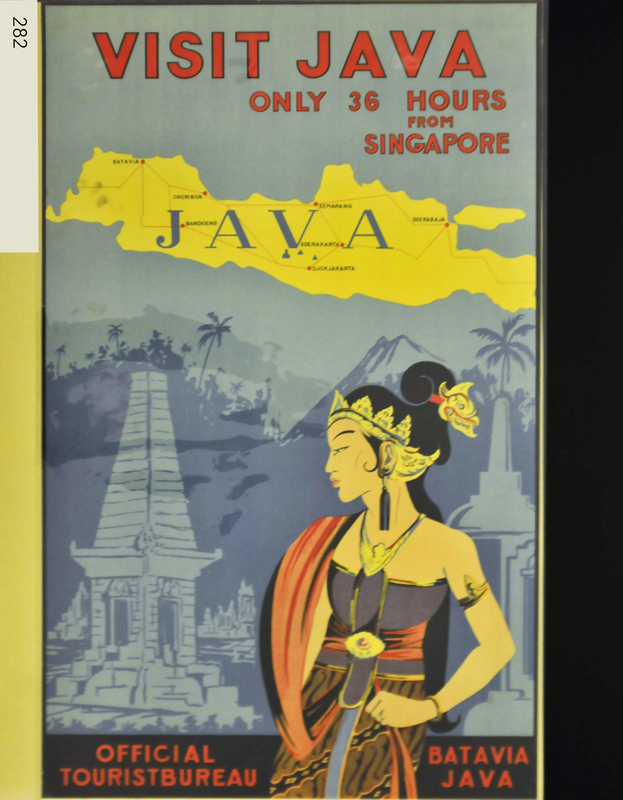Visit Java
Only 36 hours from Singapore
Item
-
Title
-
Visit Java
Only 36 hours from Singapore
-
Description
-
In the foreground is a woman with long black hair dressed in what appears to be stereotypical Indonesian formal wear, including a gold headdress and red sash. Her head is turned to the side and her hand rests on her hip. In the background is the Indonesian landscape in blue. This consists of small temples, a dark jungle, and a large volcano (likely Krakatoa) looming in the distance. Above this scene is a yellow map of the island of Java, with important cities marked by dots. At the very top of the poster are the words: "Visit Java: Only 36 hours away from Singapore." This poster, especially its portrayal of an Indonesian woman, is representative of the exoticism of Eastern countries by Western audiences and visitors.This image depicting the world of Java from its geographical elements to its people, though enticing to westerners as an exotic world is not completely accurate. The main focus of this image, the woman standing in the foreground, is clad in an elaborate and very distinctive dress. This dress, with strapless top, center band, and over the shoulder shawl is a much more accurate representation of the traditional Thai wedding dress, not that of Java. The traditional attire of Javanese women is the Kebaya. This dress is believed to have been around since the 15th or 16th century and is still an important part of the Javanese culture today. Though the Kebaya has stood the test fo time and still is worn today over the centuries its meaning and symbolism has changed. Previous to the early 20th century the Kebaya was simply a symbol of tradition and femininity. This all changed with the life of one Indonesian woman, Raden A. Kartini. Raden was born into a world of tradition and inequality and through education and fervor for her own rights she founded the first Indonesian primary school for native girls that was not discriminatory based on social stats and that was also based in a more western style curriculum. Raden changed the identity of the Kebaya because though she was deeply rooted in her tradition she was also a strong feminist. Today Javanese women where the Kebaya with pride for their culture as well as their power.
-
Contributor
-
E. King | ejk3580@rit.edu
-
Type
-
Poster
-
Identifier
-
Poster 282
http://albert.rit.edu/record=b1044461~S3


